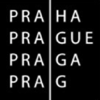Piegature – Intaglio – Intreccio or What Remains
4 – 31 Aug 2014

The exhibition takes place at the Art Archive at DOX within the project Shelf (Polička).
Heaven, hell, paradise. A paper snowflake cut-out. A caterpillar, an accordion, you know, two long strips of paper that you criss-cross... Those were the starting points for childhood play with paper before origami made its delayed way to us.
This month at Shelf, we present something unusual even for our broad take on authors’ books. For the sake of simplicity we’ll call it a book – for that it is, at least in form. Specifically, however, it is a sort of album (or sample book or instruction manual) entitled Piegature – Intaglio – Intreccio, and contains precisely what those three Italian words mean: fold-outs, cut-outs, and weaves, all from paper. The album surfaced from the Art Archive’s collections, which due to the way archival materials make their way to us (as deleted items from libraries and museums, as part of estates) often contain curious items.
But where does the charm of this book lie? At first glance certainly in its age – in the preface we read: In Memory of Bolzano, The World War 1916; in the allure of the Art Nouveau letters on its spine; in the touching rigour of its contents, but primarily in the secrets it contains.
It gives us a glimpse into the everyday details of the life of young lady living in a world that is disappearing. Questions occur to us as to how and why the book came to be. Was this a singular creation, or was it a typical pastime, a fad, like macramé, scoubidou, or finally origami – amusing handiwork that in those days was popular with every girl of a certain age? Why does the name of Marie Zamboni appear here? This Italian opera singer from nearby Venice, studied just a bit further away, in Parma, but her star did not rise until during the 1920s. A photograph taken in Bolzano, undoubtedly hers, is glued to the cover. What brought her there? The war? Music lessons or an early singing engagement? Did she, aged twenty-one at the time, make the album herself? Or, though her debut didn’t come until 1921, could she have been the object of a young girl’s admiration, who then decorated her album with her image, similarly as she would have done several decades later for example with Madonna? Or did Maria Zamboni give this album to a friend along with her photograph? Was this friend Czech (at that time Bolzano belonged to Austro-Hungarian Tyrol)? Is that how the album ended up in Bohemia?
There are many questions, but no answers. And even though we could probably get to the root of the album’s origin, this isn’t the most important thing to us. Habent sua fata libelli (books have their destinies), and the specific story of this album elicits more general ponderings on human destiny.
We have in our hands a small fragment of the everyday life of an era coming to an end; no example of high art, simply an expression of creativity that by chance survived a century. Was it the beauty of paper, its peculiar universal allure, that carried the book through time and space? There is a familiar name, which may also have been just a coincidental relationship. But this is precisely how its memory is preserved in material form. What remains, that is, what exceeds itself, can be surprising. We know not with what we will surprise others, a hundred years hence.
Curator: Lucie Rohanová









